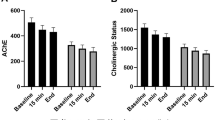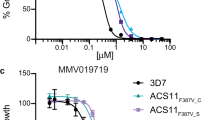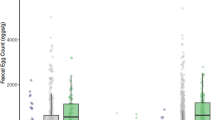Abstract
RUMINANTS grazing pastures containing a large proportion of growing Phalaris tuberosa on occasions develop a nervous disorder, phalaris staggers1,2, the symptoms of which are an initial hyperexcitability followed by muscular tremors, unco-ordinated gait and stumbling or falling when driven. Demyelination in the spinal cord ensues and complete recovery has not been observed. On the grounds that similar symptoms and pathological changes occur in cats3, dogs4 and hens5 treated with cholinesterase inhibitors, Dr. J. H. Gaddum (personal communication to Dr. H. R. Marston) suggested that some knowledge of the cholinesterase activity in the blood of animals suffering from phalaris staggers might illuminate the origin of the disorder.
This is a preview of subscription content, access via your institution
Access options
Similar content being viewed by others
References
McDonald, I. W., Aust. Vet. J., 18, 12 (1942).
Lee, H. J., and Kuchel, R. E., Aust. J. Agric. Res., 4, 88 (1953).
Feldberg, W., and Sherwood, S. L., J. Physiol., 125, 488 (1954).
Koelle, G. B., and Gilman, A., Pharmacol. Rev., 1, 166 (1949).
Barnes, J. M., and Denz, F. A., J. Path., Bact., 65, 597 (1953).
Dewey, D. W., Lee, H. J., and Marston, H. R., Nature, 181, 1367 (1958).
Ammon, R., Arch. f. d. ges. Physiol., 233, 486 (1934).
Author information
Authors and Affiliations
Rights and permissions
About this article
Cite this article
WALKER, D. Blood Acetylcholinesterase in Phalaris Staggers. Nature 184, 1411 (1959). https://doi.org/10.1038/1841411a0
Issue date:
DOI: https://doi.org/10.1038/1841411a0



